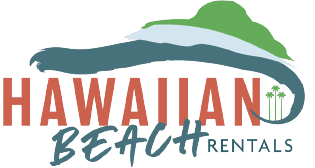When I was staying at my Oahu Condo last week I noticed sailing offshore of Waikiki was the Hokulea Voyaging Canoe. This distinctive Hawaiian sailing canoe was majestic as it went by, conjuring up all of the history of the Hawaiian people.
In the 1970s, members of the Polynesian Voyaging Society constructed this Hawaiian double-hulled voyaging canoe called the Hokulea to prove that migrating Polynesians were able to sail east against the prevailing winds and settle the “Polynesian Triangle,” a region that covers about 10 million square miles.
The Society’s founders who initiated the Hokulea’s construction were Hawaiian artist Herb Kane, seaman Tommy Holmes, and anthropologist Ben Finney. The Hokulea was launched in 1975, and then completed its first voyage, to Tahiti, in 1976. Since that time the Hokulea has sailed on numerous voyages across the Pacific Ocean.
The Hokulea is comprised of two 62-foot long kuamoo (hulls), eight iako (crossbeams) joining the two hulls, pola (decking), and two kia (masts). The voyaging canoe weighs about 8 tons and reaches speeds up to 12 knots.
From January to April, 2007 the Polynesian voyaging family undertook a mission to perpetuate their cultural heritage by completing an ocean journey to Satawal, which is the homeland of Micronesian master navigator Pius “Mau” Piailug in the Micronesian state of Yap. It was Mau who shared his ancestral knowledge with the Hawaiians and helped them rediscover the lost arts of using the stars and other natural signs to navigate the sea.
On the voyage to Micronesia, the Hokulea was accompanied by a new double-hulled Hawaiian voyaging canoe named Alingano Maisu (pronounced mai-shu), which is 56 feet long.
The Alingano Maisu was built for Mau Piailug as a gift to thank him for sharing his navigating knowledge with the Polynesian people and reintroducing Hawaiians to the ancient skills of non-instrument navigation.
The voyage of the Hokulea and the Alingano Maisu to Mau’s homeland in Micronesia was named Ku Holo Mau / Sail On, Sail Always, Sail Forever to signify the perpetuation of ancient navigating skills and the legacy of Mau Piailug.
The voyage to Micronesia was a partnership between Na Kalai Waa Moku o Hawaii (“The Canoe Builders of the Island of Hawaii”) and the Polynesian Voyaging Society.
Construction of the Alingano Maisu voyaging canoe was initiated by two of Mau’s students, the late navigator Clay Bertelmann and his brother Shorty Bertelmann, and completed by Na Kalai Waa Moku o Hawaii and a group of Micronesians from Satawal led by Mau’s son, Sesario Sewralur. Construction of the Alingano Maisu took five years and involved hundreds of people.
The name Maisu is a Satawalese word referring to the historic custom that allows anyone to pick up the fruit of ulu (breadfruit tree) if high winds cause the breadfruits to fall to the ground. In this same way the Alingano Maisu voyaging canoe will be available for the people of the region, particularly the youth, so they may gain canoe navigating knowledge and continue the cultural traditions of their ancestors.
The Alingano Maisu voyaging canoe is now home-ported on the island of Yap where it operates as a floating ocean academy that travels to the different islands. An escort vessel will travel with the Alingano Maisu, and the academy will teach traditional navigation skills, resource stewardship, and Pacific Islander cultural values.
The canoe, according to Mau, will always available to “teach the kids navigation. They can come any time; the canoe is gonna be there waiting.”
When the Hokulea and the Alingano Maisu arrived on the island of Satawal, the traditional navigators of the Micronesian Weriyeng school of navigators bestowed the title of “pwo” upon five Hawaiian men: Shorty Bertelmann, Nainoa Thompson, Chad Baybayan, Bruce Blankenfeld, and Chadd Paishon. The pwo designation recognizes the men as qualified non-instrument navigators.
The Hokulea will soon begin a journey sailing completely around the world. Tonight I am going to stay in an Oahu Hotelright on the beach at Waikiki and I am going to look seaward again and hope to see the beautiful Hokulea Voyaging Canoe that has brought so much pride and aloha to the Hawaiian people.
